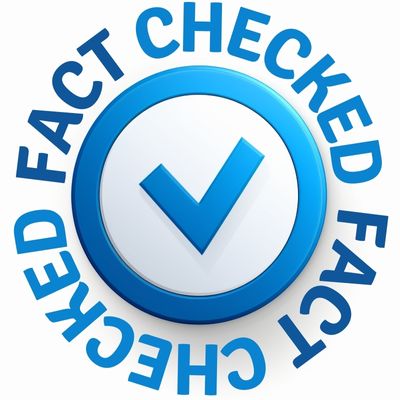
Back pain can occur for a vast number of reasons. Most of the time, we assume that any back pain felt might be due to physical activity or bad posture. Yet, there is a silent culprit behind this dilemma people suffer. People who are prone to anxiety tend to suffer from back pain.
Back pain, all sorts of it, is another common symptom of anxiety disorder. It’s saddening, but it’s true. In this article, we’ll discuss everything you need to know about it. We’ll also list a lot of helpful interventions to help manage and heal back pain from anxiety. Let’s begin.
Anxiety and Back Pain
Millions of people deal with back and neck pain every day. It’s a common dilemma that has many physical and mental triggers. Those who suffer anxiety and anxiety-related back pain are more susceptible to other types of back pain later on. It’s vital to understand that the back pain caused by anxiety is secondary. Having anxiety doesn’t necessarily cause the pain itself. Instead, the behavior caused by stress is what induces pain.
Researchers have many theories that link anxiety and back pain. Most commonly, the ache could be a result of muscle tension. It’s a well-known truth that anxiety heightens muscle tension throughout your body. This tension can lead to back pain. The muscles in the back tend to tense up during stressful times.
Common Anxiety Back Pain Symptoms
- Frequent back pain, tension, soreness, spasms and stiffness
- Sore back that causes mild to severe immobility
- Sleep can be disrupted due to chronic or unrelenting back pain
- Sharp, shooting, and stabbing pains in your back. You haven’t done anything to cause such sensations.
- Anxiety back pain can also mimic a burning sensation in the back
- Unexplained aches and tension between the shoulder blades
- Relying on pain relievers more frequently
- Your back muscles frequently spasm for no ruled reason
- Even gentle movements can cause sudden back pain
Back pain symptoms can occur rarely, frequently, or persistently. You can have them once in a while and not that often. You can also experience it to be on and off or have them all the time. They can precede, accompany, or follow an escalation of other anxiety symptoms. They can precede, accompany, or follow an episode of stress, fear, nervousness, and anxiety. They can occur out of the blue, too.
These signs also range in intensity. You can experience them from slight to moderate to severe. They can also visit in waves, where they are robust one moment and ease off the next.
How Anxiety Causes Back Pain Symptoms
1. Stress response
Anxious behavior activates our stress response. Our stress response is known as the fight or flight response.
It causes many body-wide changes that prepare the body for instant emergency action.
One of these changes is muscle tightening. It occurs so that the body becomes more silent from injury. Tight muscles in the back then result in tension, stiffness, soreness, and restricted mobility.
In some scenarios, muscles can tighten so much that they become uncomfortable. They can become painful, sore, and full of spasms.
2. Hyperstimulation
Frequent activation of the stress response or being overly anxious can cause our body to remain in a semi-stress response readiness state. We acknowledge this state as stress-response hyperstimulation. Our stress hormones are robust stimulants.
Hyperstimulation can elicit changes in an active stress response even though a stress response hasn’t been activated.
Other general factors. Below is a list of things that can cause stress and aggravate anxiety and back pain symptoms.
- Medication
- Recreational drugs
- Stimulants
- Sleep deprivation
- Fatigue
- Hyper and hypoventilation
- Low blood sugar
- Nutritional deficiencies
- Dehydration
- Hormone changes
- Pain
How To Relieve Back Pain From Anxiety: Short-Term Remedies
1. Stretch
Stretching is critical. You need to keep the muscles stretched and nimble. It will aid in preventing further back aches. Ensure you’re stretching regularly to avoid any “freezing” of the muscle that may create pain.
2. Watch your posture
Overthinking your posture isn’t always in your best interest. Yet, it is essential to pay attention to any bad posture that you may have because of stress and anxiety. Suppose your seating is in a wrong position. Fix it with better posture and see if it makes a tremendous difference.
3. Exercise and be mobile
Being mobile aids. Walk around, exercise, and do activities that will strengthen your back. Remember the value of physical fitness.
4. Massage
Massage is a handy tool for anxiety and back pain. It is a great way to work out muscle aches. After a session, your back will often be less painful.
5. Deep breathing exercise
Deep breathing calms the nervous system and relaxes the muscles. Breathe slowly through your nose, hold for a few seconds, and then exhale slowly through your mouth.
6. Progressive muscle relaxation
This intervention involves tensing and then relaxing each muscle group in your body. It begins from your toes and works its way to the head. It helps release tension. It amazingly promotes relaxation.
7. Heat or cold therapy
Apply heat pad or a cold pack to your back for 15-20 minutes. This will help by cutting inflammation and relieving pain.
8. Pain killers
OTC painkillers are another helpful way to fight back pain. Even though the ache you feel is anxiety-induced, drugs like Tylenol, which is specifically designed for pain, can still respond well to the aches.
How To Stop the Cycle of Back Pain From Anxiety
1. Sleep
A good night’s slumber is vital for anxiety disorders along with chronic pain conditions. Symptoms of both types of health dilemmas often become worse without adequate sleep.
Consistent sleep and wake times, a good sleep environment, and abstaining from caffeine late at night can promote restful slumber.
2. Nutrition
People with anxiety should limit or abstain from caffeine and alcohol. Both can trigger panic attacks along worsen anxiety symptoms. Some types of food may also exacerbate musculoskeletal conditions. These foods are dairy products, gluten, corn, sugar, and nightshade family members.
3. Stress Management Techniques
Incorporate stress management tactics into your daily routine. These practices can help lower overall stress levels and ease back pain.
4. Cognitive Behavioral Therapy
CBT can assist in identifying and challenging negative thought patterns and behaviors that account for anxiety. It teaches coping skills to manage anxiety better. Thus, it can indirectly decrease back pain.

Frequently Asked Questions About Panic Attack Back Pain
1. How to calm a panic attack?
There are several effective interventions to calm a panic attack. They are:
- Breathing techniques
- Grounding techniques
- Progressive muscle relaxation
- Visualization
- Mindfulness awareness exercises
- Counseling
2. What does a panic attack feel like?
- Feeling faint, dizzy, or light-headed
- Experiencing changes in temperature, feeling very cold or hot
- Sweating, trembling, or shaking
- Nausea
- Racing heartbeat
- Shortness of breath
- Sudden high anxiety with or without a cause
- A sense of impending doom or danger
3. Why does my back hurt when I feel anxious?
- Muscle tension
- Posture changes
- Increased sensitivity to pain
- Stress
- Psychological factors
4. How do I know if my back pain is anxiety?
- Persistent muscle tension
- Pain without a physical cause
- Pain that improves with relaxation techniques
An anxious mind alone is already a rigid stat. Combining it with back pain is even more challenging and indeed hurtful. But anxiety-induced back pain is now gone for good with our guide. Practice our helpful tips to manage aches in your back caused by anxiety. Ensure your mind is healthy, so your body i,s too.
Experience ASMR Back Scratch in Boca Raton

Author Tracy Gorman
I am Tracy Gorman, an experienced writer dedicated to producing compelling and informative content. With a deep understanding of diverse subjects such as lifestyle, beauty, and wellness, I create valuable articles for everyone.

This Content Has Been Reviewed For Factual Accuracy
Our editors have conducted comprehensive fact-checking on this article to ensure factual accuracy. Read more about our editorial standards here.
